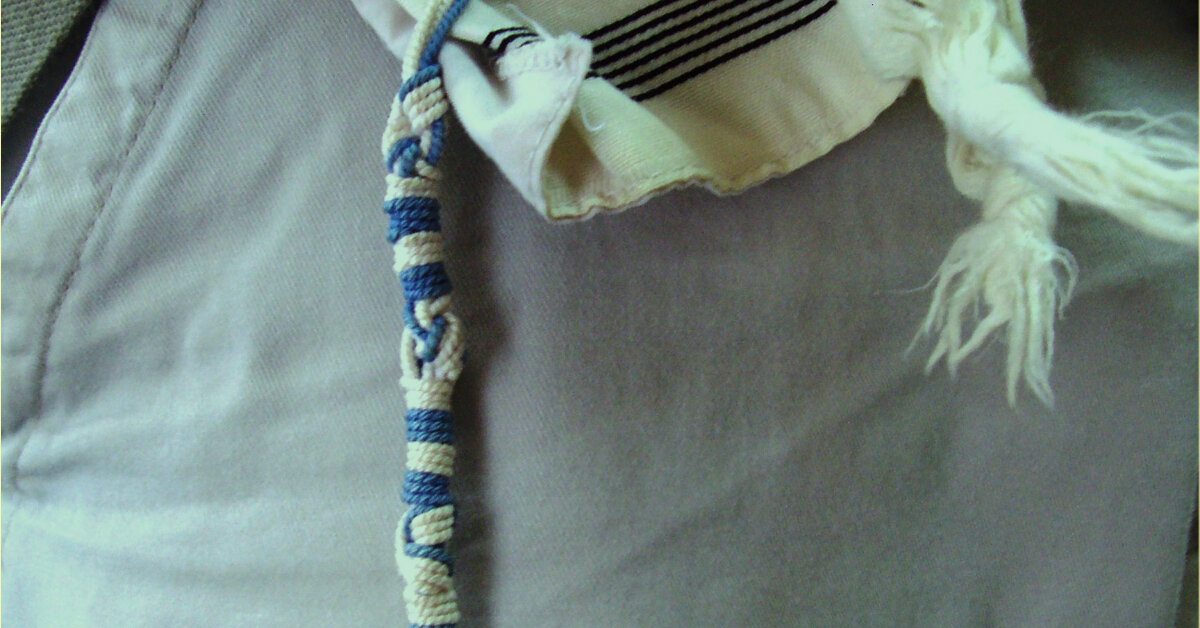
Editor’s note: This post originally appeared on davidwilber.me. Tabernacle of David considers this ministry trustworthy and Biblically sound.

Author: David Wilber
If you were involved in a church youth group during the nineties, you likely remember a trendy wristband that kids used to wear as a symbol of their faith. On these wristbands was the acronym WWJD, which stood for, “What Would Jesus Do?”
These wristbands were meant to serve as a physical reminder to live honorable lives for Jesus—Yeshua—the Messiah. It was a neat idea to help Christians remember that they are representing the Messiah and that they should act accordingly.
We see a biblical version of this very same idea:
Speak to the people of Israel, and tell them to make tassels on the corners of their garments throughout their generations, and to put a cord of blue on the tassel of each corner. And it shall be a tassel for you to look at and remember all the commandments of the Lord, to do them, not to follow after your own heart and your own eyes, which you are inclined to whore after. (Numbers 15:38-39)
The word “tassels” here comes from the Hebrew word tzitzit. Tzitzit are loosely hanging threads that are specially knotted and worn on the corners of your garment.
According to the passage, wearing tzitzit wasn’t just some temporary instruction that God told the ancient Israelites to do. God’s people are to wear tzitzit “throughout their generations” as a reminder that they are to live set-apart lives in accordance with God’s commandments. Like those WWJD wristbands we wore in the nineties, tzitzit remind us that we are representing the God of Israel and the Messiah Yeshua, and we ought to act accordingly.
Speaking of WWJD, many people might be surprised to learn that Yeshua wore tzitzit Himself!
And behold, a woman who had suffered from a discharge of blood for twelve years came up behind him and touched the fringe of his garment. (Matthew 9:20)
The Greek word for “fringe” in this verse is kraspedon, which refers to Yeshua’s tzitzit. So it’s clear that our Messiah kept this commandment, which makes sense seeing as how He was an observant Jew in the first century. Why wouldn’t He have worn them?
In addition to being a reminder to keep God’s commandments, another practical benefit of wearing tzitzit today is that it opens up opportunities to present the Gospel. Many people are curious when they see someone wearing tzitzit since it’s not something they see all the time. This can often lead to questions and very fruitful discussions about our faith.
Like putting on a wedding ring as a symbol of your covenant commitment to your spouse, wearing tzitzit is a small way to express your commitment to the God of Israel. It’s a special symbol to remind yourself and the rest of the world to whom you belong. You might consider giving it a try!
This article was adapted from a video teaching I wrote for 119 Ministries called “Parashah Points: Shelach – WWJD? He Would Wear Tzitziyot!”
About David Wilber

David is first and foremost a passionate follower of Yeshua the Messiah. He is also a writer, speaker, and teacher.
David’s heart is to minister to God’s people by helping them rediscover the validity and blessing of God’s Torah and help prepare them to give an answer to anyone who asks about the hope within them (1 Peter 3:15)…

